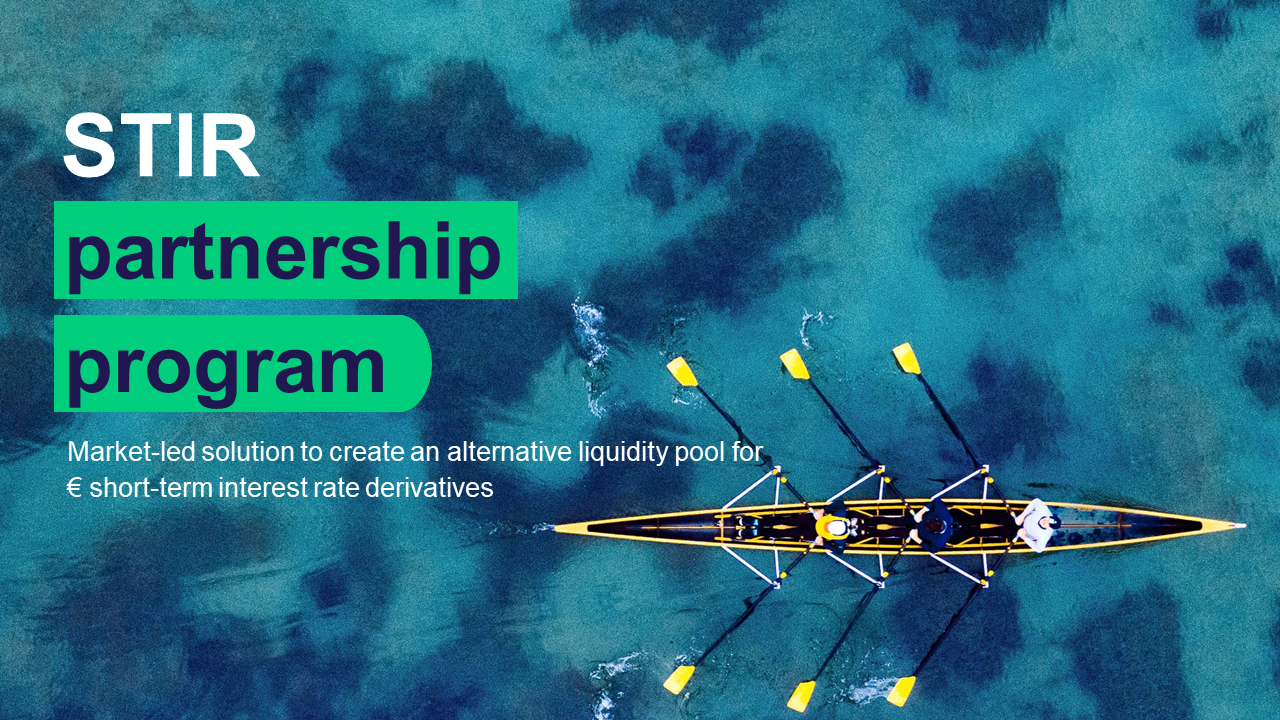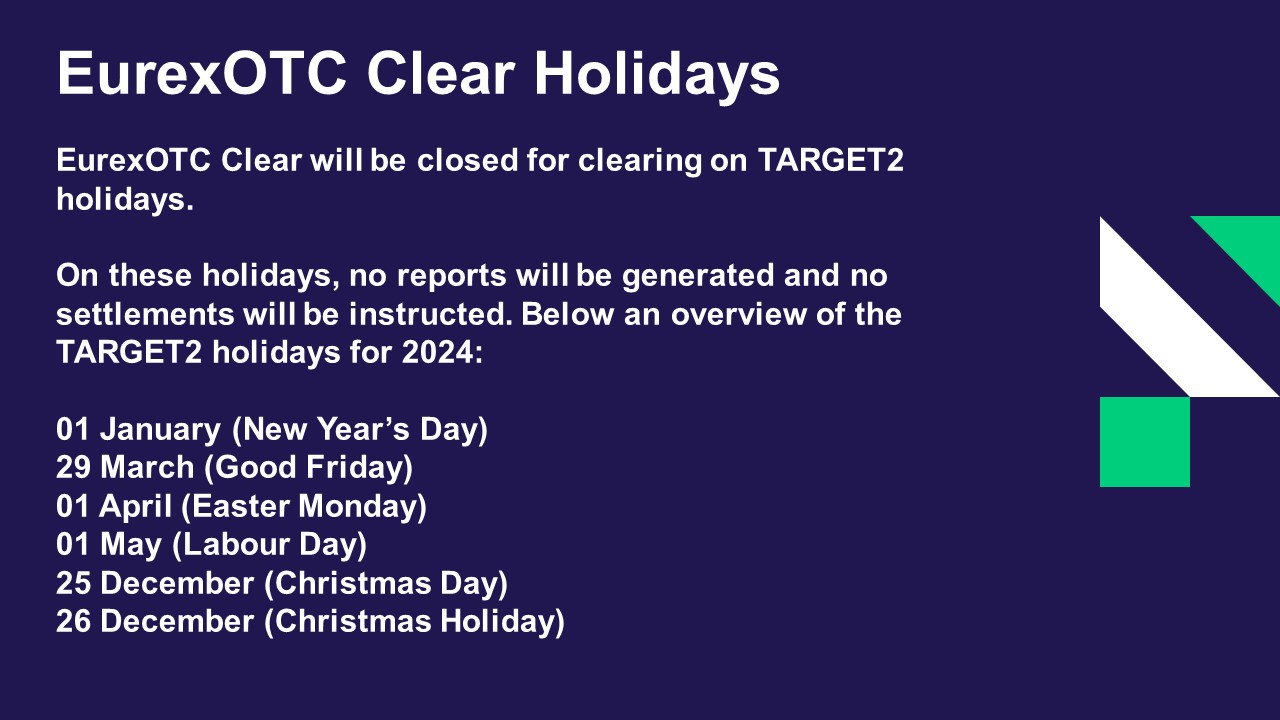The volatility that swept the market at the height of the Covid‑19 pandemic proved a challenge for many participants across many different segments of the industry. But one firm that appears to have held course and passed the test was Eurex Clearing, the CCP based in the European Union that has grown steadily into a competitor of London-based rival LCH in the euro interest rate swaps clearing business.
“Some people thought that, in the crisis, liquidity in over-the-counter (OTC) interest rate swaps might actually dry up at Eurex Clearing and switch back to the larger market, which was LCH, but that did not happen,” says Philip Simons, global head of fixed income sales, derivatives, funding and financing at Eurex.
“Eurex Clearing has now demonstrated it is a reliable and sustainable euro liquidity pool and that many clients who had been sitting on the fence have now started to actively clear at Eurex.”
Even during the toughest period of the crisis in March, one client undertook a portfolio switch with roughly €5 million in basis point value (DV01), while others are also looking at either backloading their bilateral portfolios or resuming switching from LCH.
An analysis of euro swaps prices quoted via request-for-quotation (RFQ) shows an even split between Eurex Clearing and LCH, pouring cold water on the idea that the market would just simply shift back to the larger market during a crisis. Data compiled by Eurex shows across two-, five-, 10- and 30-year swaps, some dealers were quoting more competitive bids than at LCH, and vice versa, demonstrating the same liquidity at both.
“We have seen screens developed, dealers quoting both LCH and Eurex cleared prices at the same spread. So we have solved the liquidity issue and clients are really free to choose the clearing house. Thus, we have solved this chicken and egg problem for clients to ultimately enable free choice,” says Sören Kretschmar, director, interest rates derivatives trader at Deutsche Bank.
Eurex Clearing did not get to this position overnight. The German-based CCP has been growing its ability to compete with LCH for a number of years, which has really accelerated since the decision by the UK to leave the EU in June 2016.
The clearing house now has 88 clearing members, 24 of which are unique to Eurex Clearing, and more than 360 individual end-clients across 25 countries. Roughly 60% of these are based in Germany, the UK, France, the Netherlands and Luxembourg.
Anyone who wants to clear at Eurex is able to gain access to pricing via all major trading platforms – such as Bloomberg and Tradeweb – as well as interdealer brokers such as BGC, TP Icap and Tradition via RFQ, disclosed streaming or a central limit order book. The CCP also has the most relevant risk optimisation tools, such as netting, compression and margin optimisation.
The numbers show the growth in market share Eurex Clearing has already achieved. For example, its notional outstanding market share in euro OTC interest rate derivatives has continually increased since 2018 – from 3% to 18% of the euro market. In specific products, that market share is even greater, such as forward-rate agreements (FRAs), where euro market share now sits at almost 40%, while average daily volume continues to grow in the swaps and FRA markets.
“The notional outstanding euro market share is consistently around 40% in FRA and it has been growing very nicely in long-dated interest rate swaps to more than 13% now. What you see is, since the crisis, we have been picking up the growth rate between 0.5% to nearly 1% additional market share per month,” says Simons.
A scheme set up by Eurex in 2017 to incentivise new participants to join its CCP has also played its part. The performance-based partnership programme now boasts 40 participants. Based on this programme, the CCP shares a significant part of the economics of its interest rate swaps segment with the 10 most supportive participants. In addition, it opens up its governance structure. This helped dramatically improve the CCP’s competitiveness versus LCH, which can be seen via the liquidity in the basis market.
Prior to the partnership programme, clearing euro swaps at LCH had been more competitive than Eurex Clearing – by as much as 4 basis points in longer tenors, but the basis began to come down dramatically after the programme was launched, collectively reaching as little as 0.5bp in September 2018. The Eurex-LCH basis even turned negative in the third quarter of last year and stayed that way until the crisis in February and March pushed it back into slightly positive territory again.
“It is important to highlight that, nowadays, despite such volatility, we’re not seeing the basis move that much. This is a clear indication of how liquid this market has become over time,” says Carlo Sironi, a director and interest rates swaps trader at UniCredit.
Continued liquidity improvements at Eurex Clearing have given market participants additional confidence in switching trades from LCH.
In November, DekaBank transferred a substantial portion of its swap book in a single day. The complex transaction, involving thousands of line items and a dealer bank as transfer agent, was carried out without any disruption or market impact. Simons says the line items amounted to roughly 7,000 moving across to Eurex Clearing, showing it is possible to a switch even this large.
“You can also combine these line-by-line item switches with risk transfer, but ideally they should be more about operationally moving your underlying trades from one CCP to the other.”
Operationally, there are different ways to perform the switch. There is a single trade switch, where basis trades are quoted for a standard tenor or broken-dated, or a portfolio switch, where a number of trades are performed typically at standard tenors to switch portfolio risk, reducing total margin requirement at LCH while reopening that risk at Eurex. Alternatively, more complex options – such as those chosen by DekaBank – are also available where you can individually switch each underlying trade.
“These risk transfers happen in good size and can be up to €2 million–€3 million of DV01 in one go. This does not require a lot of preparation time and can be done in two hours if it is properly set up,” says Deutsche Bank’s Kretschmar.
The motivation for clients to switch is also increasing, says Simons. Brexit is still very much on the regulatory agenda for financial institutions as there is still no clarity on whether the EU will grant equivalence to the UK and if it will be acceptable for euro swaps being cleared to such a large degree outside of the EU – impacting firms residing in the EU but also clearing at LCH in London.
Negotiations have taken a hard-line approach, with the deadline to reach an agreement at the end of 2020. Should this not happen, then it leaves those cliff-edge risks open to market participants once again.
“The low-risk decision if you are an EU-based client with a primarily euro portfolio is to go with Eurex Clearing under that scenario. Liquidity was the challenge before, and I think we have addressed and proved that we have the liquidity and so we have taken that obstacle away now. I think that is the big difference between now and then,” Simons concludes.
This article was first published on Risk.net on 04 August 2020.


